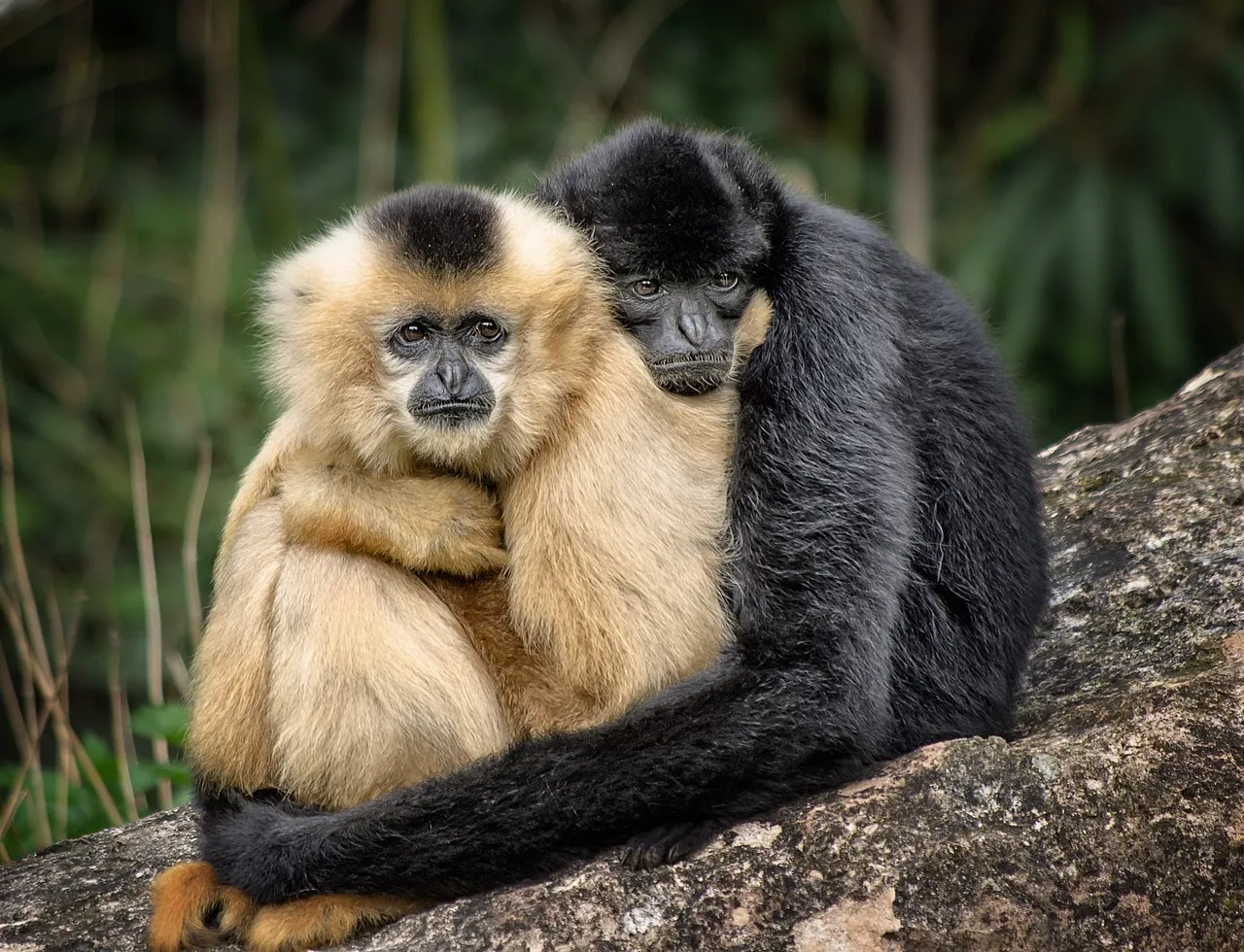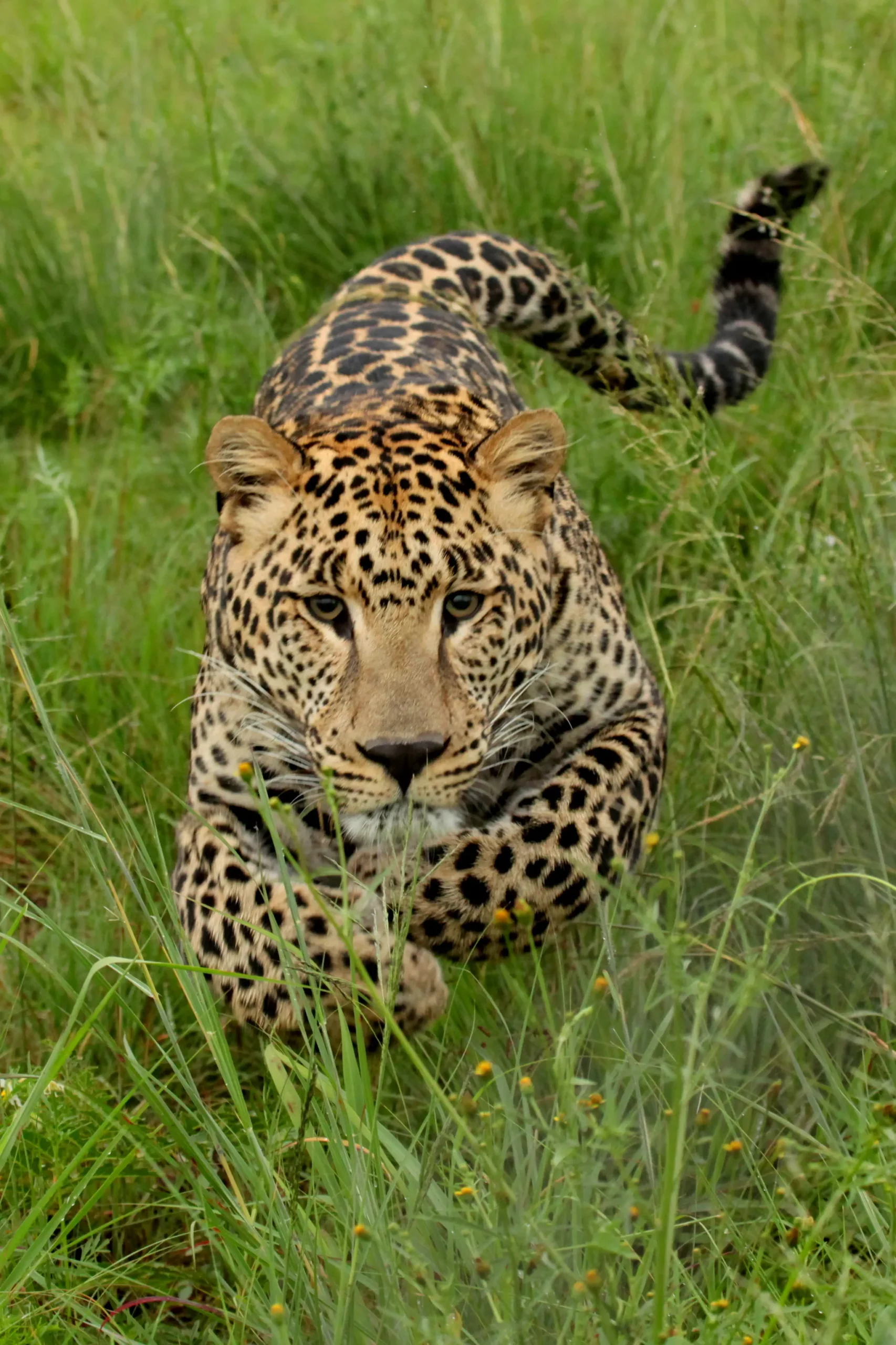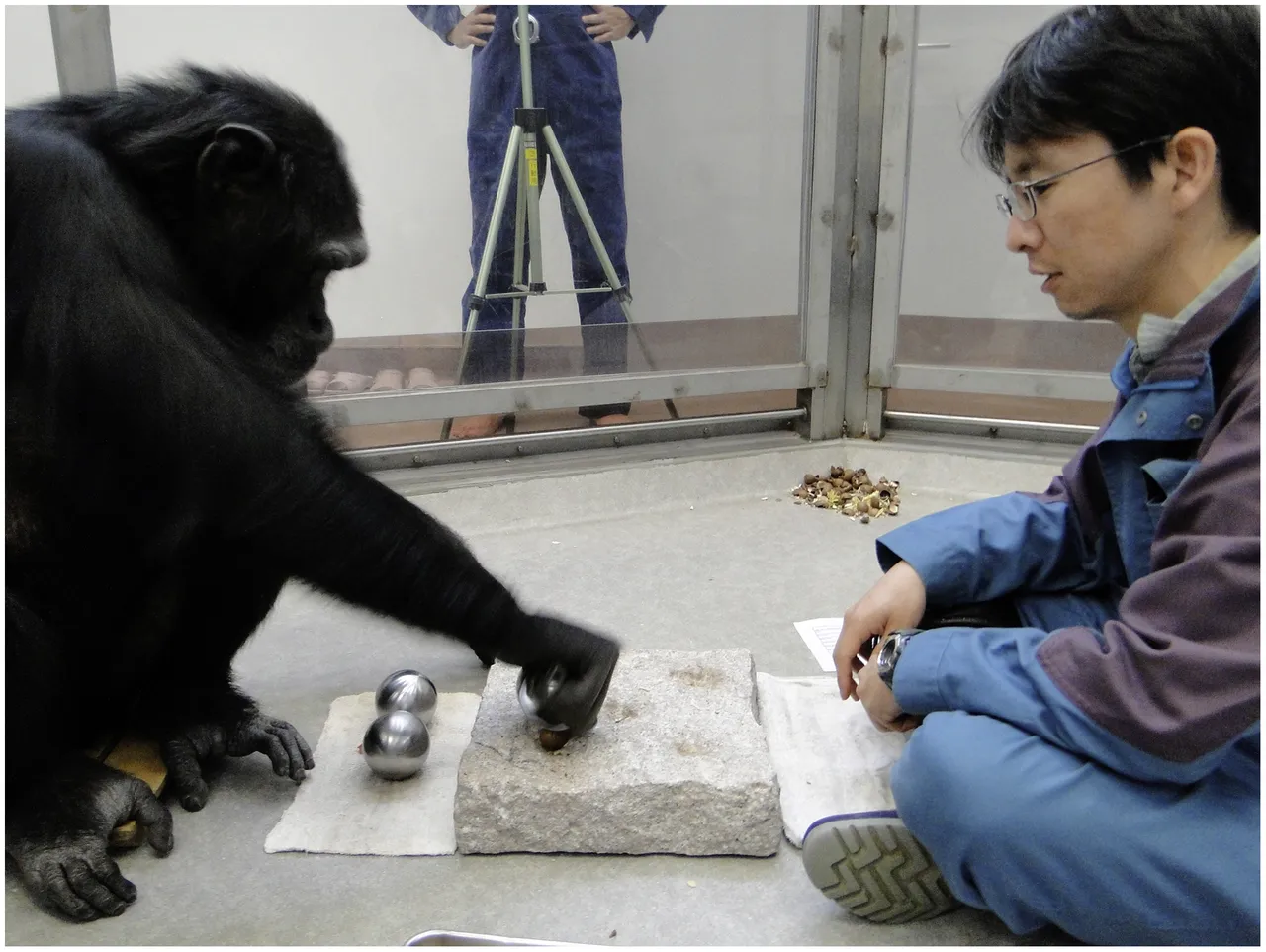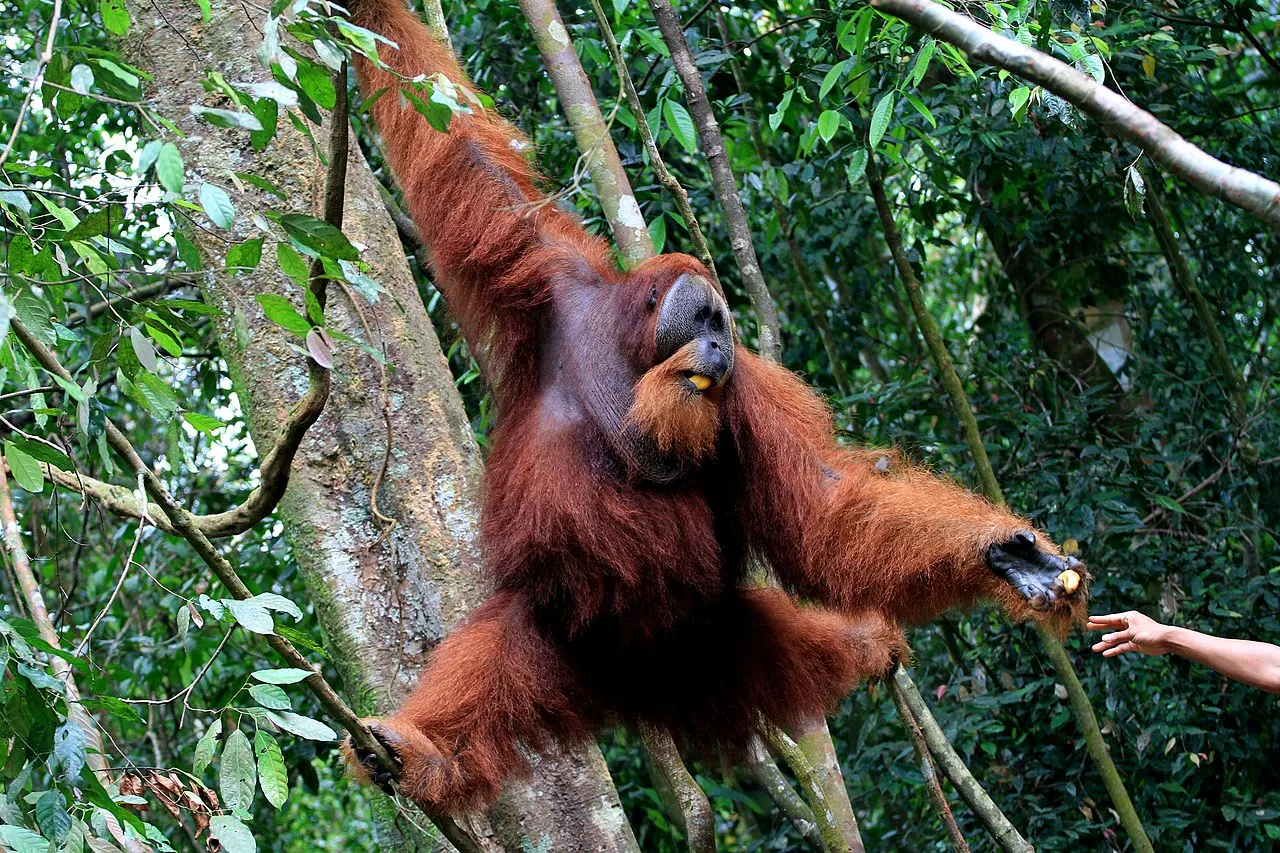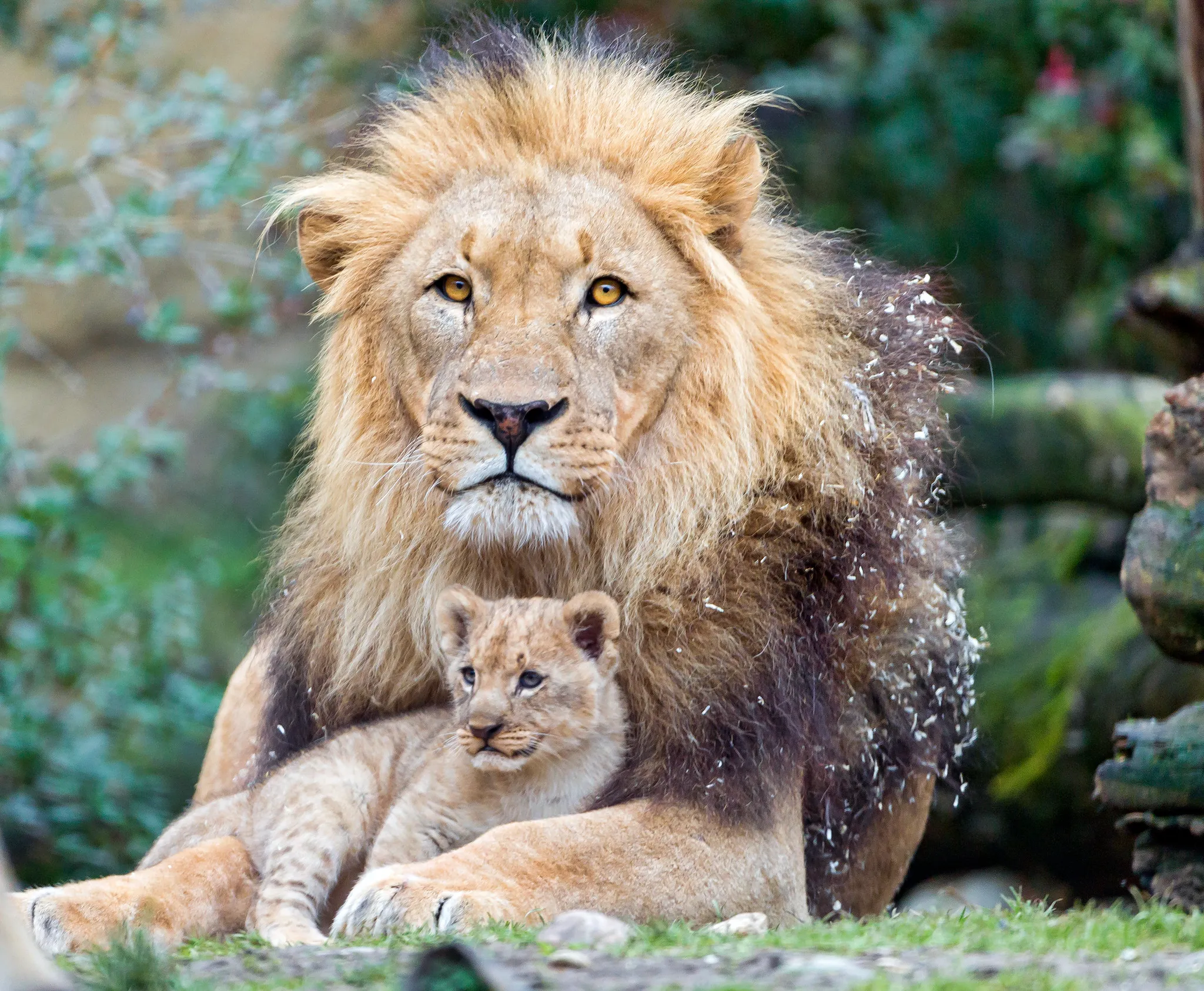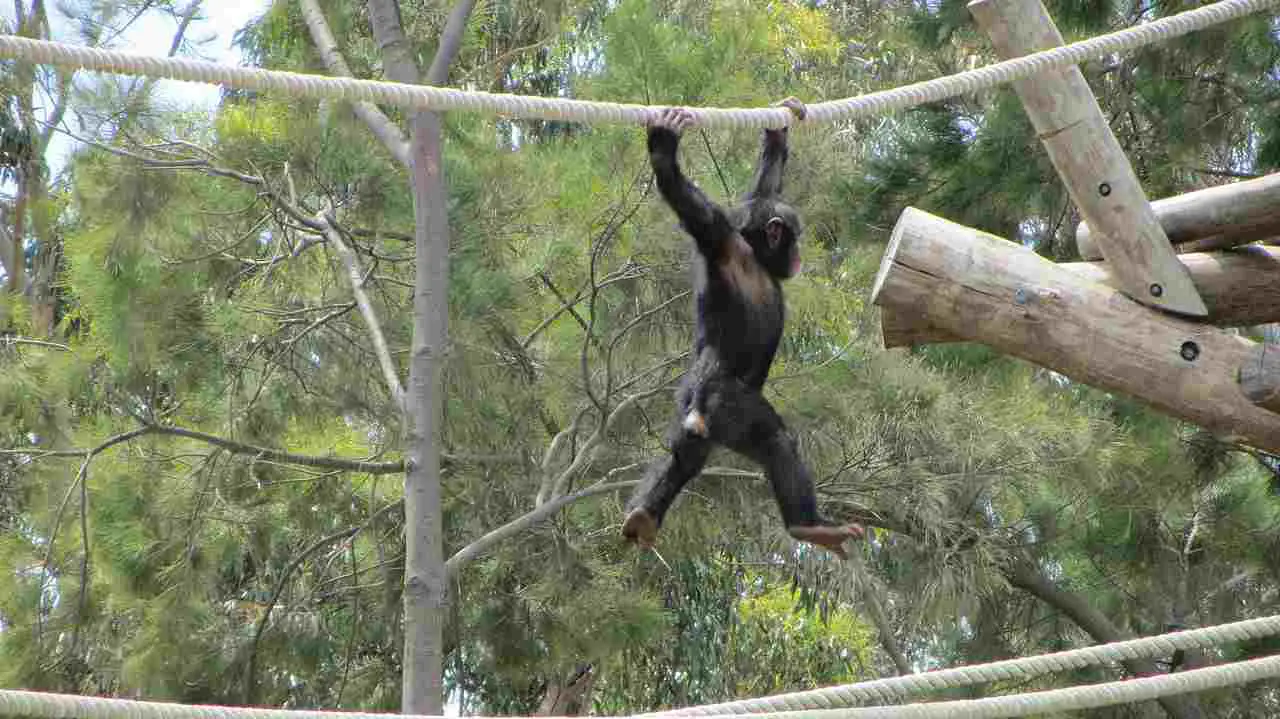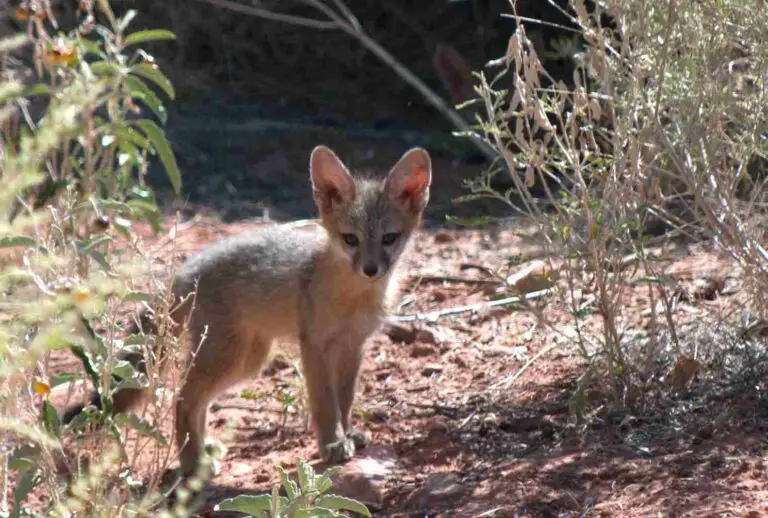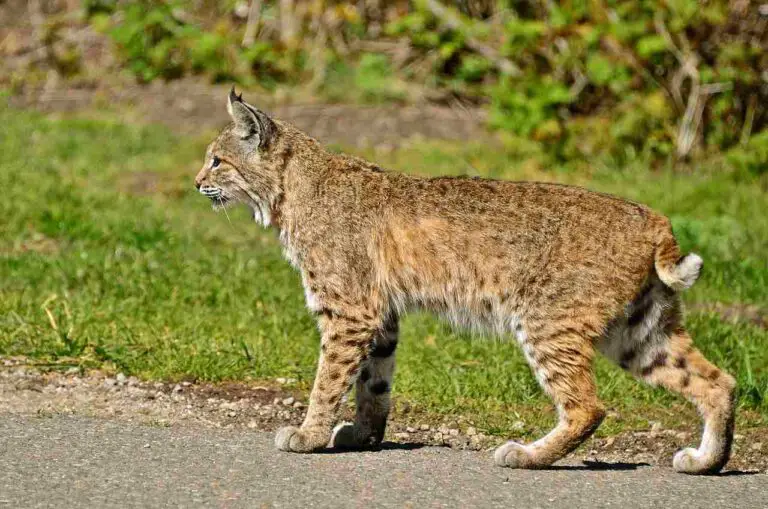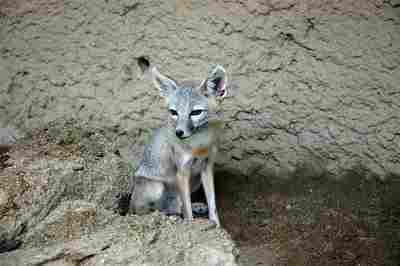Chimpanzee Vs Monkey Fight Prediction, Overall Comparison
The distinctions between chimpanzees and monkeys involve various characteristics, behaviors, and evolutionary nuances. While both are primates, chimpanzees are much stronger and more dangerous than monkeys.
I. Tail Disparity:
– Monkeys, characterized by their membership in the Monkey family, are distinguished by the presence of tails. In contrast, chimpanzees, as apes, lack this defining feature.
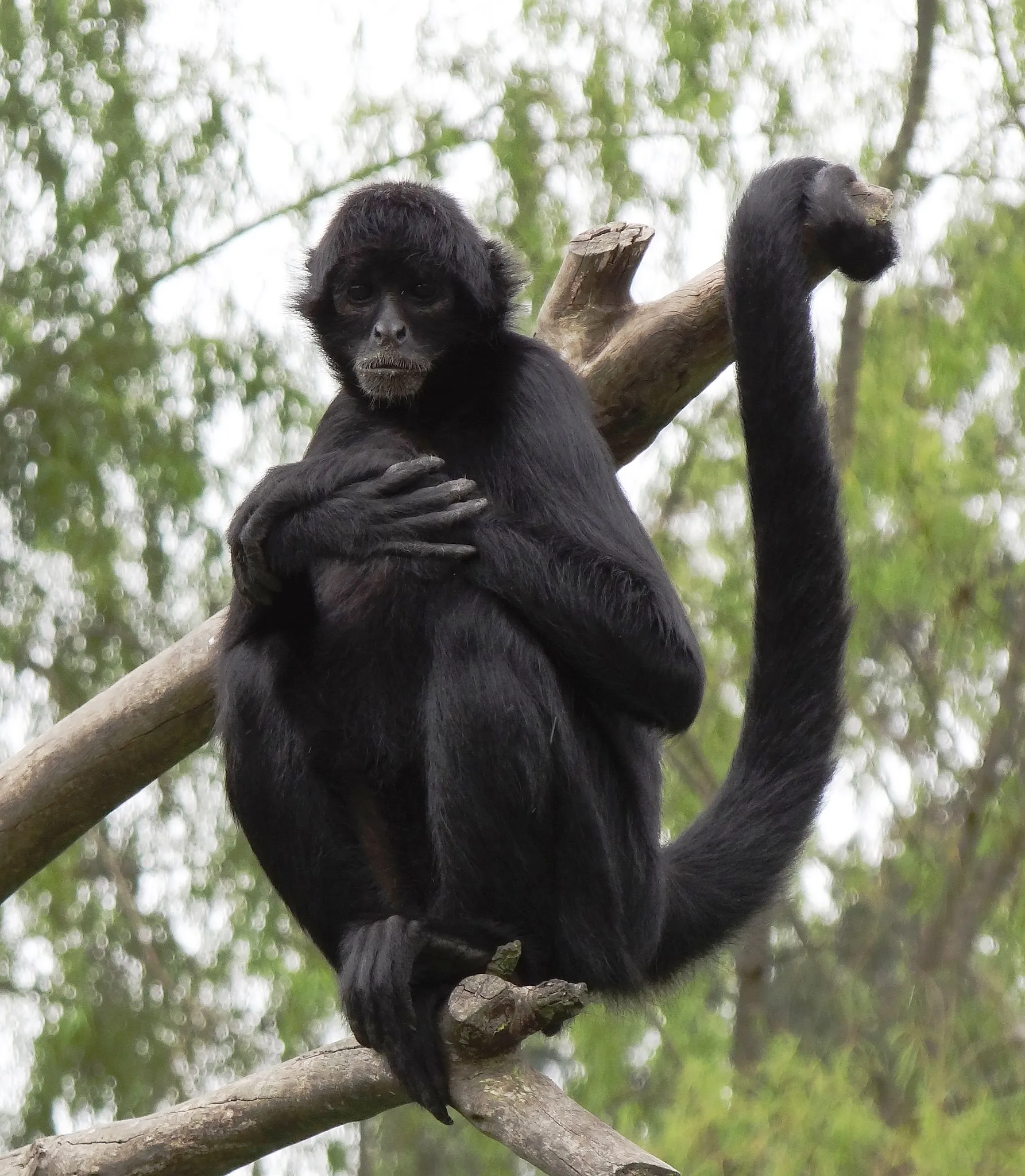
II. Taxonomic Classification:
– Monkeys and chimpanzees fall into different taxonomic categories, with monkeys belonging to the infraorder Simiiformes, while chimpanzees are categorized as apes.
III. Genetic Proximity:
– Chimpanzees share more DNA with humans than with monkeys, highlighting a closer genetic relationship between humans and chimpanzees.
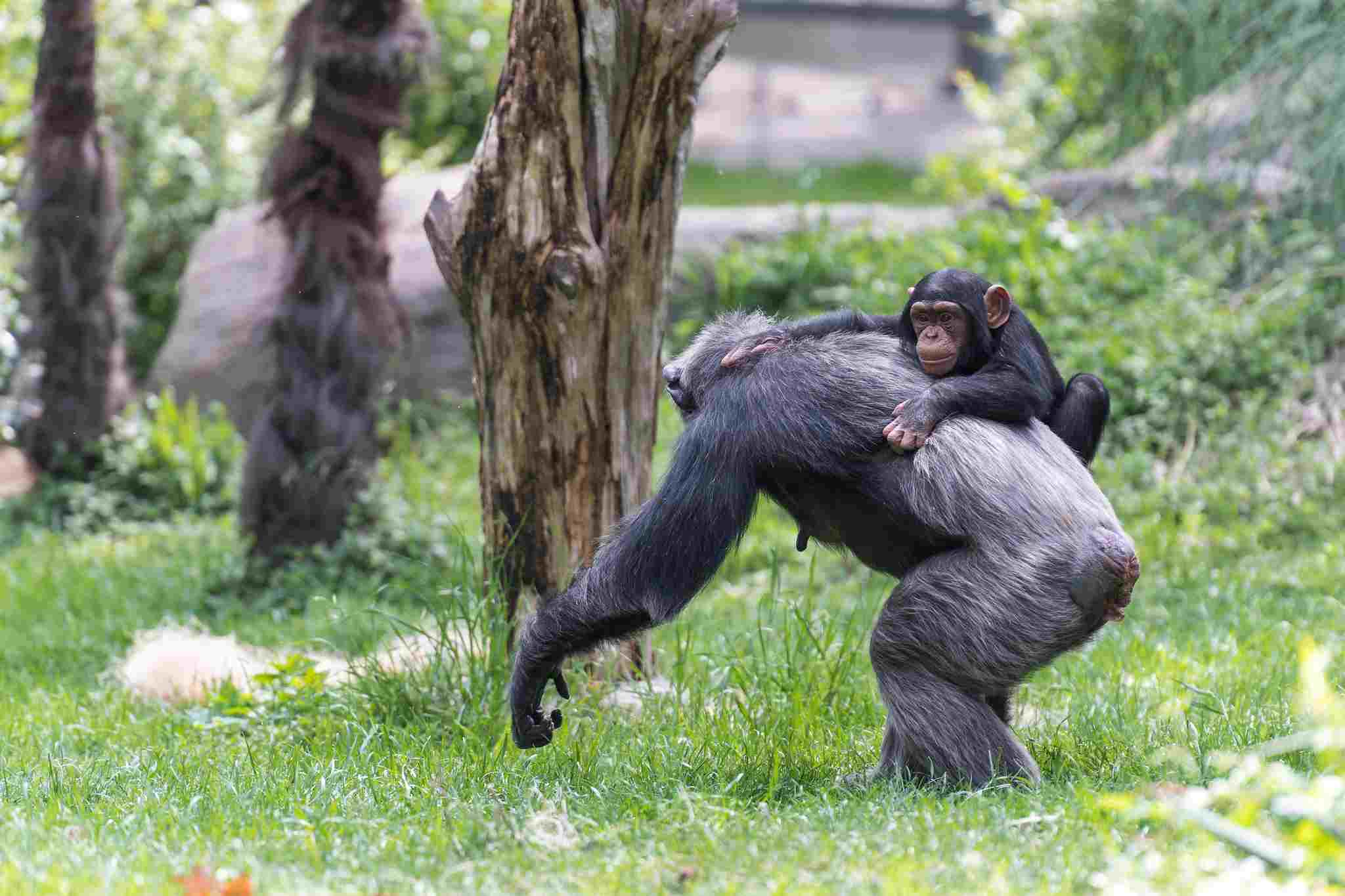
IV. Size and Physical Characteristics:
– Chimpanzees, specifically the Pan troglodytes species, exhibit a mass ranging from 40 to 60 kg for males and 32 to 47 kg for females. Monkeys encompass a diverse range of species, each with distinct size variations.
V. Social Behavior:
– Chimpanzees are known for their complex social structures and behaviors, including tool usage and cooperative hunting, distinguishing them from the varied social dynamics of monkeys.
*Details of Comparison
| Criteria | Chimpanzee | Monkey |
| Taxonomy | Genus Pan, Species troglodytes |
Varies by species (e.g., Cercopithecidae for Old World monkeys, Cebidae for New World monkeys)
|
| Appearance | Coarse black hair, expressive eyes, longer arms |
Diverse appearances, varied fur patterns, tails in many species
|
| Size | Generally larger, males 3.3-5.6 feet, females 2-4.6 feet |
Wide size range, from small to large species
|
| Weight | Males 90-130 pounds, females 60-110 pounds |
Varied, from a few ounces to over 100 pounds in larger species
|
| Bite Force (PSI) | Estimated 1,000-1,300 PSI |
Varies, generally lower than chimpanzees
|
| Physical Offensive Advantages | Strong, tool use, well-developed canines |
Varied physical traits, some agility and speed
|
| Physical Defensive Advantages | Climbing, strength, cooperative behaviors |
Speed, agility, climbing abilities
|
| Speed | Around 25 km/h (15.5 mph) |
Variable, generally 20-40 km/h (12-25 mph)
|
| Agility | Exceptional climbing and swinging abilities |
Highly agile, species-specific adaptations
|
| Senses | Well-developed vision, acute hearing, sense of touch |
Varied senses, including vision, hearing, and touch
|
| Overall Physical Capacity | Robust, versatile, both quadrupedal and bipedal locomotion |
Varied physical capacities, adapted to ecological niches
|
| Habitat Preference(s) and Geographic Region | Tropical rainforests, savannas, Central and West Africa |
Diverse habitats globally, including rainforests, deciduous forests, and savannas
|
| Tracks | Variable, handprints and footprints resembling humans |
Diverse tracks, tail marks in species with prehensile tails
|
| Lifespan | 40-60 years in the wild |
Varied, 10-40 years depending on species
|
| Mode of Feeding | Omnivores, tool use for extracting insects and cracking nuts |
Varied diets, some with cheek pouches, opportunistic feeders
|
| Intelligence | Advanced problem-solving, tool use, complex social structures |
Varies by species, some with high cognitive abilities
|
| Social Behavior | Complex social groups, cooperation, hierarchies |
Variable social structures, grooming, vocal communication
|
| Mode of Reproduction | Polygamous, longer gestation, single offspring every 5-6 years |
Varied mating systems, gestation periods, and number of offspring
|
| Parental Behavior | Extensive care, offspring dependent for several years |
Diverse parental care, variable duration, and involvement
|
| Proximity to Human-Inhabited Areas | Face threats from habitat loss, hunting, and diseases |
Varied relationships, some adapt well to human-altered landscapes
|
| Behavior Toward Humans | Can be aggressive, conflicts in captivity or disturbed habitats |
Variable behaviors, avoidance to aggression, adaptability to human presence
|
| Danger Posed to Humans | Potentially dangerous due to strength and aggression |
Generally less threatening, may become aggressive if provoked
|
| Associated Precautions | Maintain safe distances, secure enclosures in captivity |
Avoid direct contact, use measures for waste disposal in urban areas
|
| Conservation Status | Endangered |
Varied, from least concern to critically endangered depending on species
|
Key Points
- Chimpanzees are generally larger, with a robust physique, while monkeys exhibit a wide size range.
- Chimpanzees have a stronger bite force and more direct physical aggression, whereas monkeys rely on agility and evasion.
- Both species exhibit high agility, but chimpanzees showcase versatility in various terrains.
- Chimpanzees have a longer lifespan, more extended parental care, and a lower reproductive rate than monkeys.
- Chimpanzees face a higher risk of extinction (endangered) compared to some monkey species.
- Human safety precautions and conservation efforts should consider species-specific characteristics and behaviors.
1. Taxonomy
Chimpanzee (Pan troglodytes):
Kingdom: Animalia
Phylum: Chordata
Subphylum: Vertebrata
Class: Mammalia
Order: Primates
Family: Hominidae
Genus: Pan
Species: troglodytes
Monkey (various species, e.g., Macaca, Cebus, etc.):
Kingdom: Animalia
Phylum: Chordata
Subphylum: Vertebrata
Class: Mammalia
Order: Primates
Varies by species (e.g., Cercopithecidae for Old World monkeys, Cebidae for New World monkeys)
2. Appearance
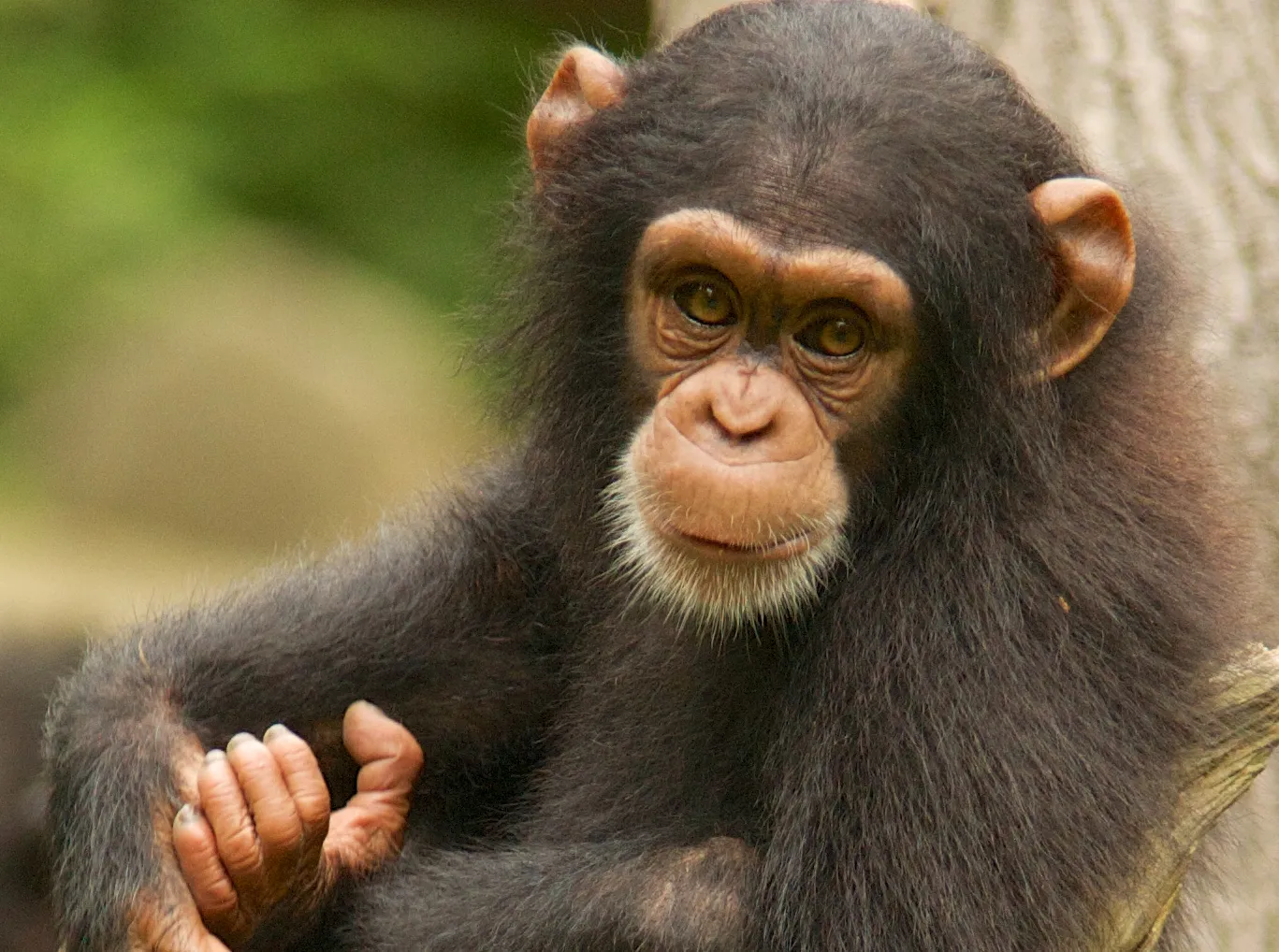
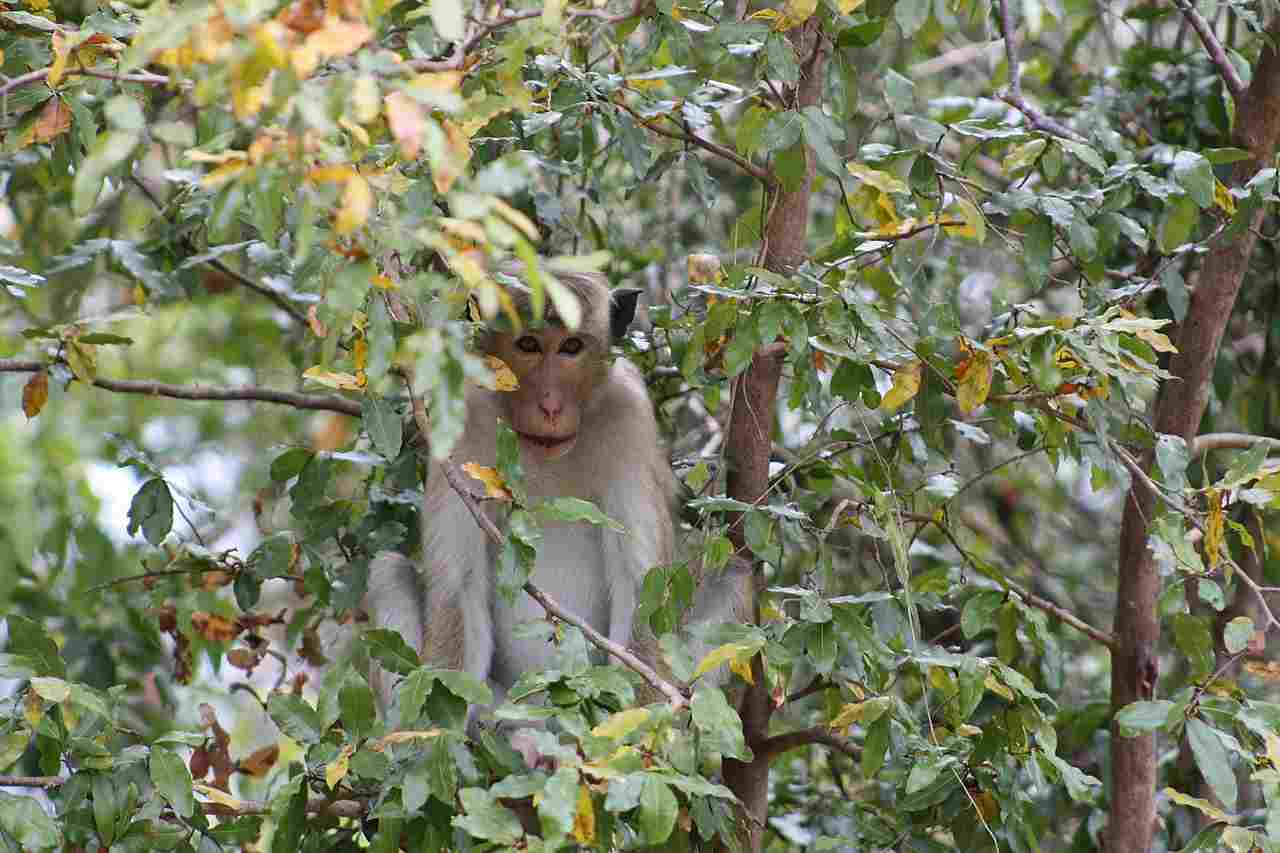
Chimpanzee:
Covered in coarse black hair, more sparse on the face
Prominent ears and large, expressive eyes
Longer arms compared to legs
Monkey:
Diverse appearances depending on species
Varying fur colors, patterns, and facial features
Generally, monkeys have tails, while chimpanzees lack a tail
Comparison:
Both display morphological diversity, but monkeys often have more varied fur patterns.
Chimpanzees have a more robust and muscular build, while monkeys can exhibit a wider range of body sizes and shapes.
Ecological Implications:
Chimpanzee appearance is adapted for an arboreal and terrestrial lifestyle.
Monkey appearance reflects adaptations to diverse habitats, with tail variations for balance and social signaling.
3. Size
Chimpanzee:
Adult males: 3.3 to 5.6 feet (1 to 1.7 meters)
Adult females: 2 to 4.6 feet (0.6 to 1.4 meters)
Monkey:
Varies widely among species, from small New World monkeys to larger Old World monkeys
Comparison:
Chimpanzees generally larger than most monkeys, especially in terms of body mass.
Monkeys exhibit a broader size range, from tiny pygmy marmosets to large mandrills.
Ecological Implications:
Chimpanzee size contributes to their dominance in various ecosystems.
Monkey size diversification allows them to occupy different niches within ecosystems.
4. Weight
Chimpanzee:
Adult males: 90 to 130 pounds (40 to 59 kg)
Adult females: 60 to 110 pounds (27 to 50 kg)
Monkey:
Varies significantly among species, ranging from a few ounces to over 100 pounds (45 kg) in larger species like mandrills.
Comparison:
Chimpanzees generally weigh more than most monkeys, particularly New World monkeys.
Monkey weight spans a wide spectrum, influenced by factors such as diet and habitat.
Ecological Implications:
Chimpanzee weight contributes to their dominance and ability to forage efficiently.
Monkey weight adaptations are linked to their ecological roles and dietary preferences.
5. Chimpanzee Vs Monkey Teeth, Bite Force (PSI – Pounds per Square Inch)
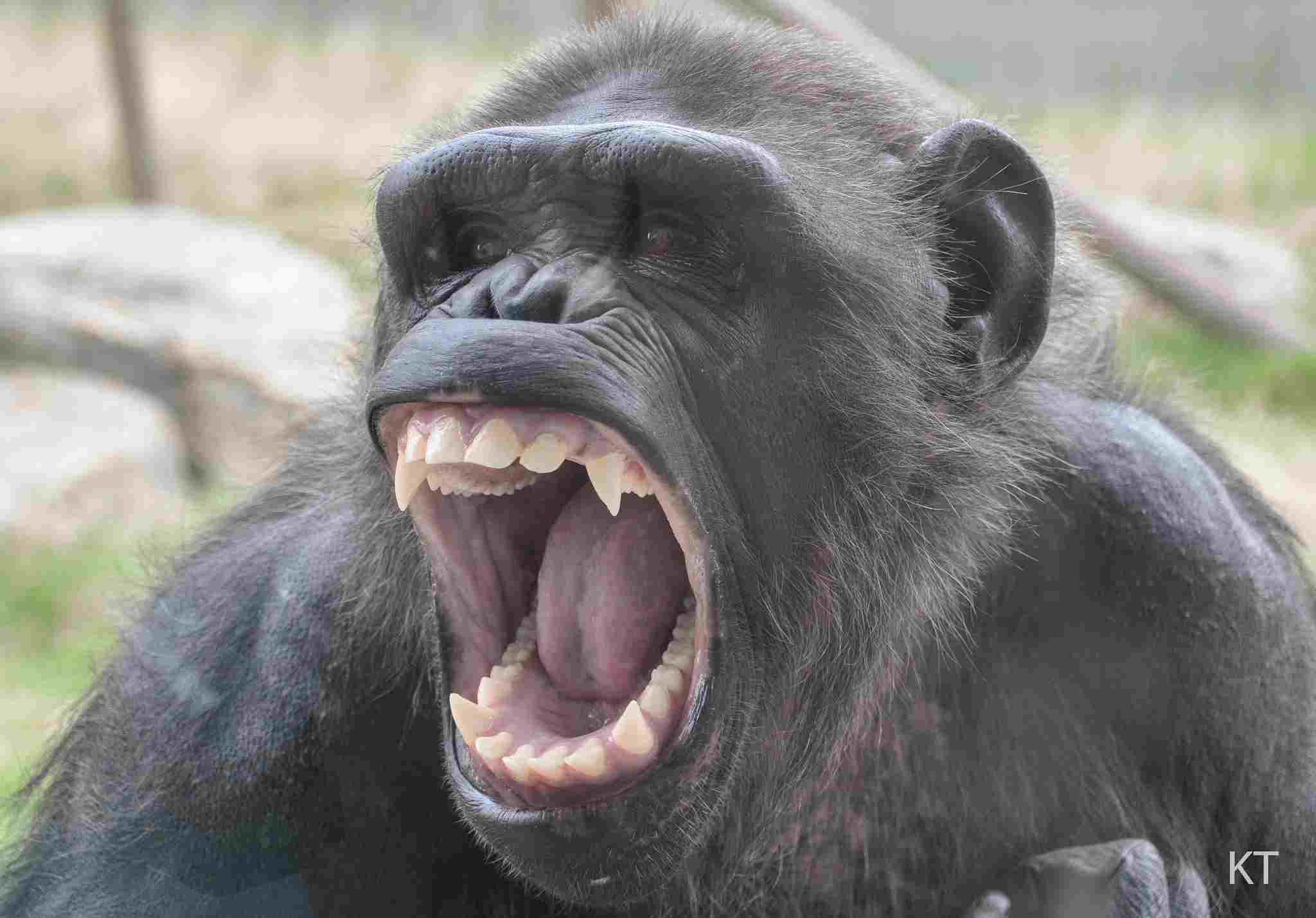
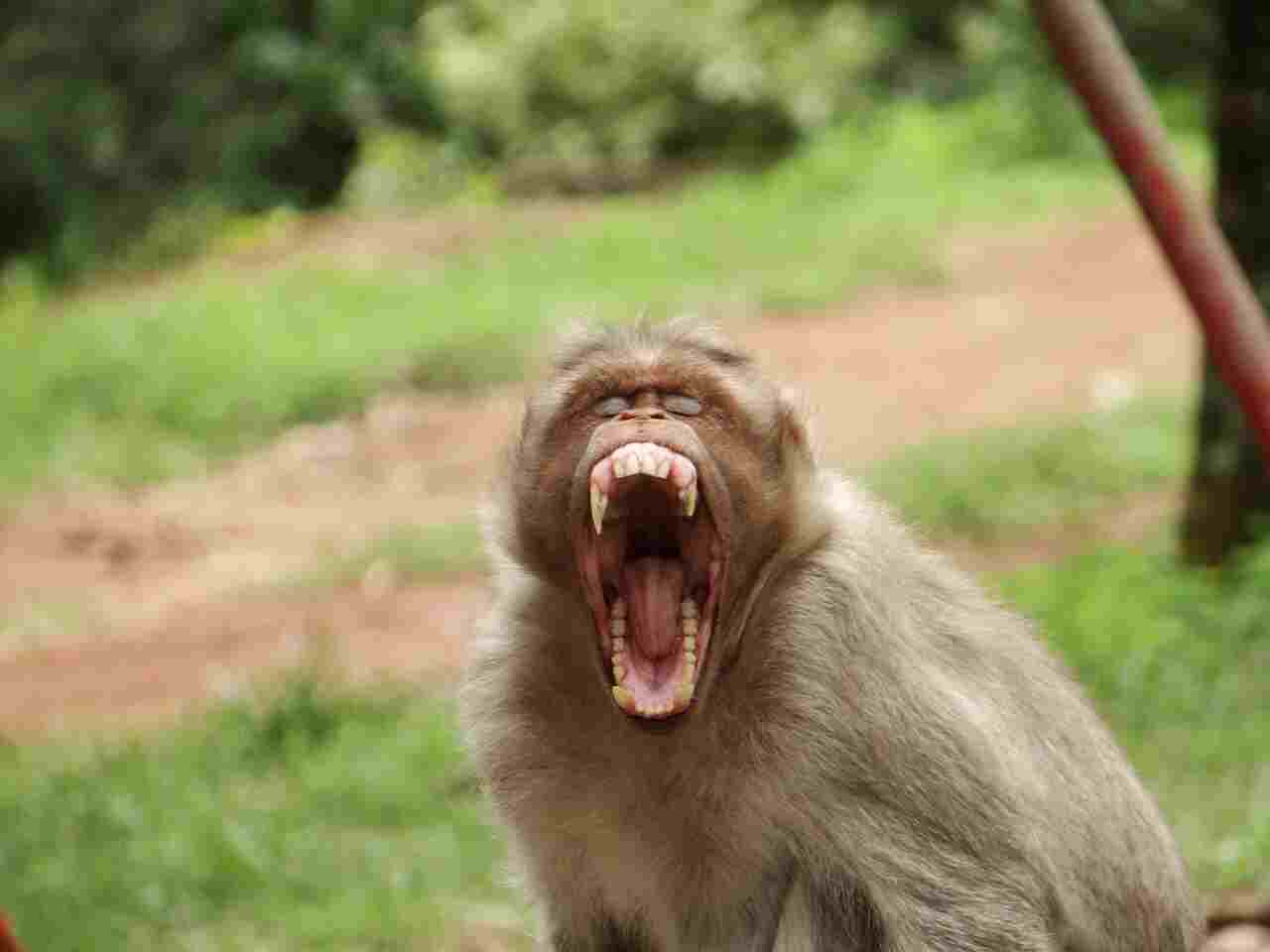
Chimpanzee:
Estimated to be around 1,000 to 1,300 PSI
Monkey:
Varies significantly among species, with smaller monkeys having lower bite force
Comparison:
Chimpanzees generally possess a stronger bite force than most monkeys.
Monkey bite force correlates with species size, diet, and jaw morphology.
Ecological Implications:
Chimpanzee bite force aids in cracking nuts and consuming tough vegetation.
Monkey bite force is adapted to their specific dietary needs, influencing their role in seed dispersal and foraging strategies.
6. Physical Offensive Advantages
Chimpanzee:
Strong and muscular physique
Well-developed canines for display and aggression
Use of tools for hunting and aggression
Monkey:
Variable physical traits depending on species
Some species exhibit agility and speed for evasion rather than direct confrontation
Limited tool use compared to chimpanzees
Comparison:
Chimpanzees employ more direct physical aggression and tool usage for offensive strategies.
Monkeys often rely on agility and evasion rather than direct confrontation.
Ecological Implications:
Chimpanzee aggression may impact prey populations and influence ecosystem dynamics.
Monkey strategies contribute to predator avoidance and affect their interactions with other species.
7. Physical Defensive Advantages
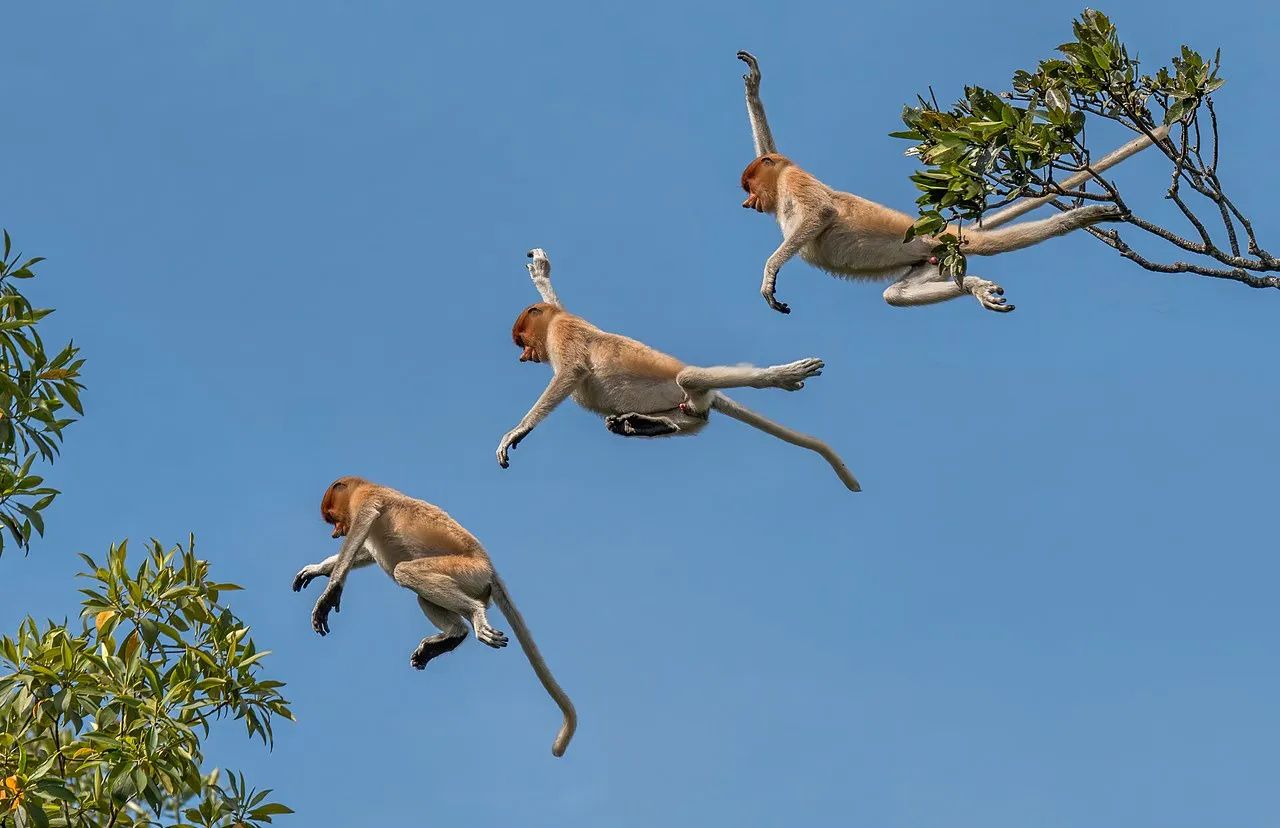
Chimpanzee:
Agile climbing abilities to escape predators
Strength and cooperative behaviors within social groups for protection
Monkey:
Speed, agility, and ability to climb trees
Some species exhibit group defense mechanisms
Comparison:
Both chimpanzees and monkeys utilize climbing abilities for defense.
Chimpanzees rely more on strength and cooperation, while monkeys emphasize agility and speed.
Ecological Implications:
Defensive adaptations contribute to the survival of both species in their respective habitats.
Group defense in monkeys may impact predator-prey dynamics and social structures.
8. Speed (Km/hour or Mile/hour)
Chimpanzee:
Estimated to reach speeds of 25 km/h (15.5 mph)
Monkey:
Variable speed depending on species, ranging from 20 to 40 km/h (12 to 25 mph)
Comparison:
Chimpanzees and monkeys exhibit similar running speeds.
Speed is influenced by factors such as body size, habitat, and locomotor adaptations.
Ecological Implications:
Speed contributes to predator evasion and successful foraging in both chimpanzees and monkeys.
Differences in speed may influence their roles within ecosystems and interactions with other species.
9. Agility
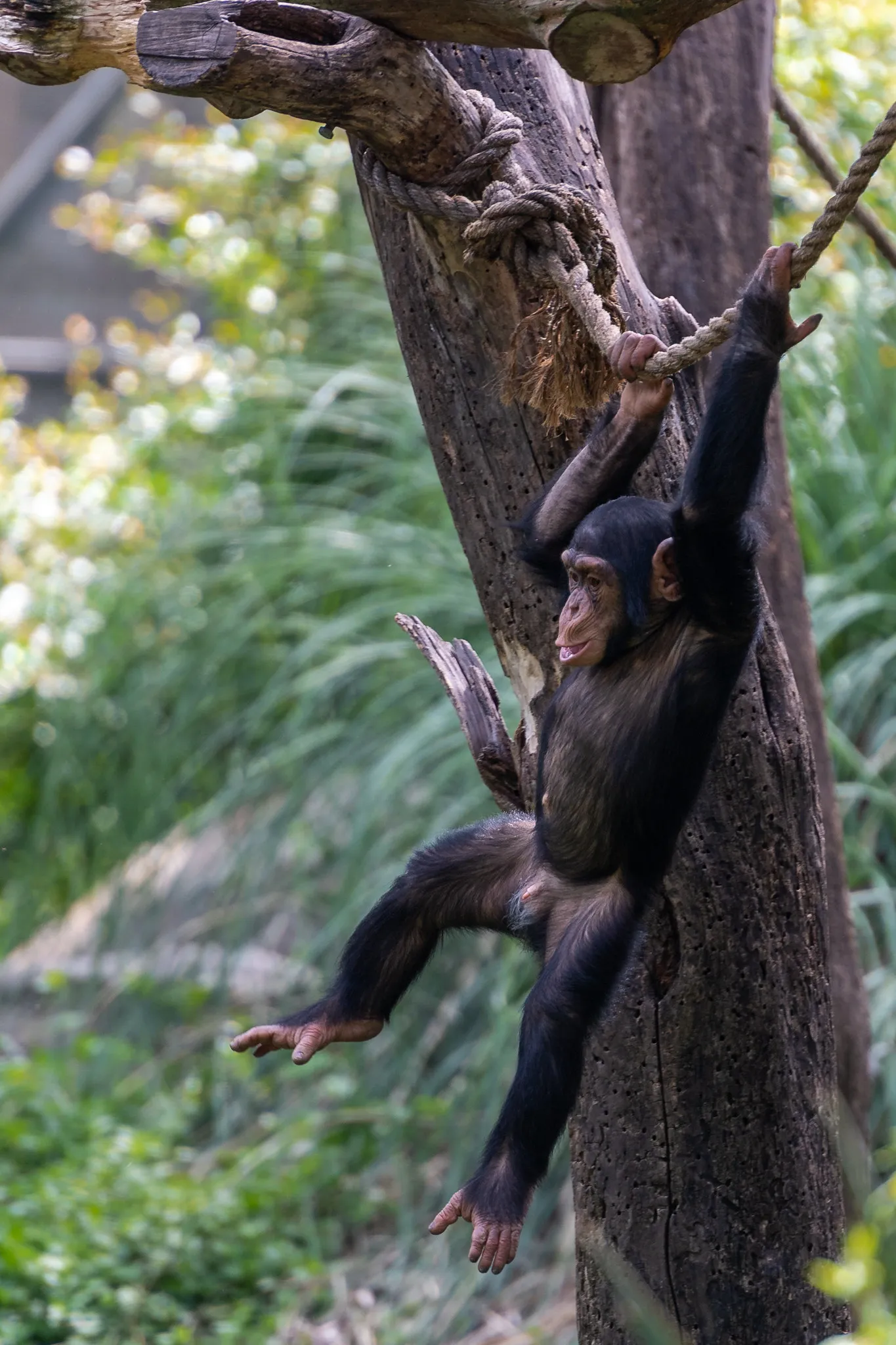
Chimpanzee:
Exceptional climbing and swinging abilities
Nimble movements on the ground and in trees
Monkey:
Highly agile, with species-specific adaptations for arboreal locomotion
Quick and coordinated movements in varied environments
Comparison:
Both chimpanzees and monkeys exhibit high agility, adapted to their specific habitats.
Chimpanzees showcase agility in diverse terrains, including both ground and tree environments.
Ecological Implications:
Agility enhances foraging efficiency and predator avoidance for both species.
Adaptations in agility contribute to their ecological roles and interactions within ecosystems.
10. Senses
Chimpanzee:
Well-developed vision for detecting movement and objects
Acute sense of hearing
Sense of touch used in social interactions and tool use
Monkey:
Varied senses depending on species
Some have excellent vision for arboreal environments
Sense of touch crucial for social bonding and communication
Comparison:
Both chimpanzees and monkeys rely on a combination of vision, hearing, and touch.
Vision is often crucial for detecting predators, prey, and navigating their environments.
Ecological Implications:
Sensory adaptations influence their ability to navigate and interact within their specific habitats.
Differences in senses may impact foraging strategies, predator detection, and social interactions.
11. Overall Physical Capacity
Chimpanzee:
Strong and agile, capable of both quadrupedal and bipedal locomotion
Robust physique for climbing, tool use, and social interactions
Monkey:
Varied physical capacities depending on species
Adaptations for arboreal locomotion, some with prehensile tails
Comparison:
Chimpanzees generally have a more robust and versatile physical capacity.
Monkeys display a wide range of physical adaptations based on their ecological niche.
Ecological Implications:
Overall physical capacity shapes their roles in ecosystems, influencing foraging and social dynamics.
Physical adaptations contribute to their ecological niche and interactions with other species.
12. Habitat Preference(s) and Geographic Region
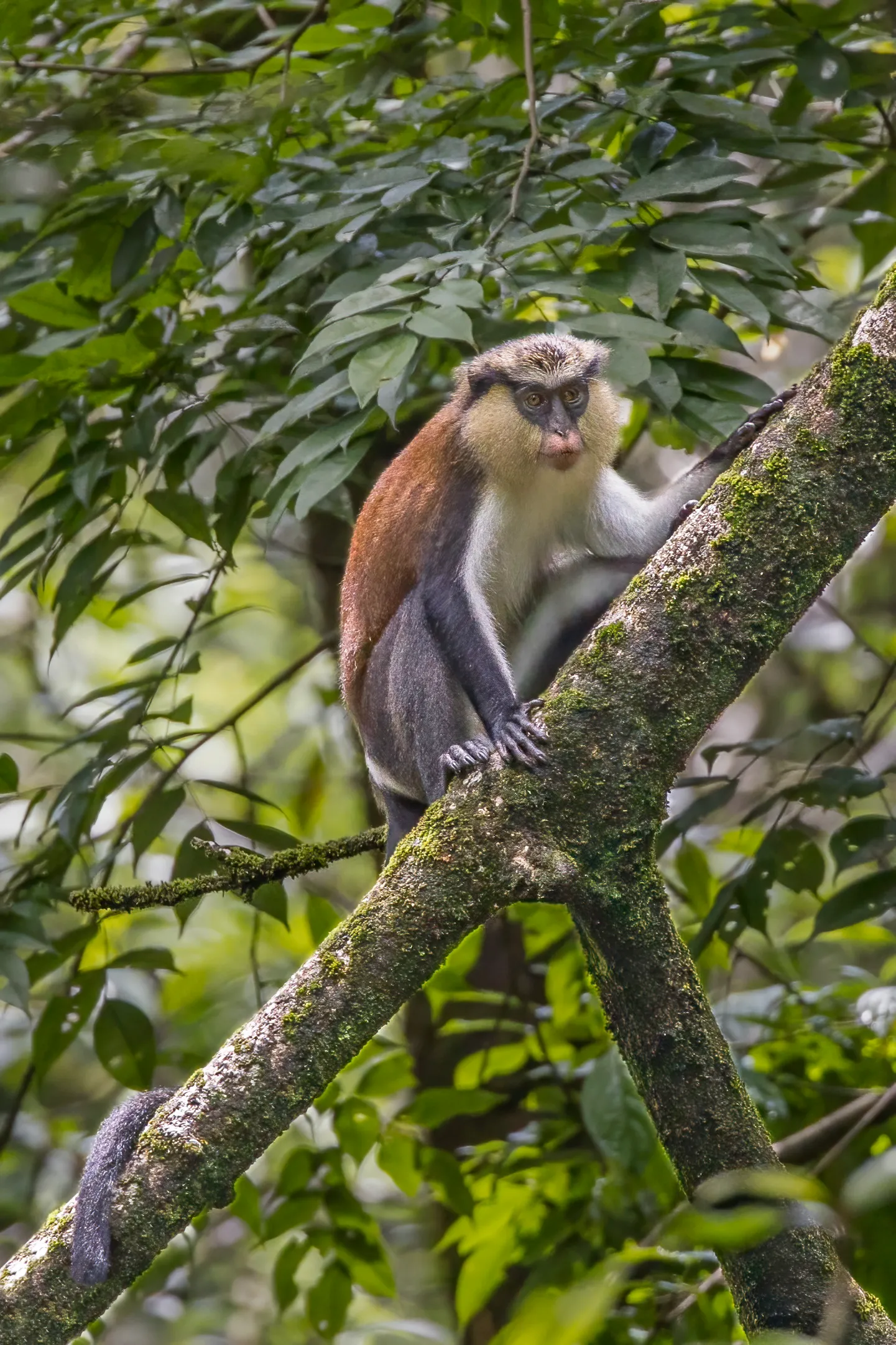
Chimpanzee:
Found in tropical rainforests, savannas, and woodlands in Central and West Africa
Monkey:
Diverse habitats including tropical rainforests, deciduous forests, savannas, and mountains across the globe
Comparison:
Both chimpanzees and monkeys display habitat diversity, adapting to various ecosystems.
Specific species of monkeys can be found on almost every continent, showcasing adaptability.
Ecological Implications:
Habitat preferences influence their diet, behavior, and interactions with other species.
Geographic distribution reflects their ability to adapt to diverse environmental conditions.
13. Tracks
Chimpanzee:
Variable tracks depending on substrate, with handprints and footprints resembling a human’s
Monkey:
Diverse tracks reflecting species-specific characteristics
Tail marks often present in tracks of monkeys with prehensile tails
Comparison:
Chimpanzee tracks may show a mix of hand and footprints, reflecting their bipedal and quadrupedal locomotion.
Monkey tracks vary based on species, with tail marks providing additional information about their movement.
Ecological Implications:
Tracking can aid in monitoring population movements and distribution.
Differences in tracks may offer insights into their behavior, habitat use, and potential ecological impacts.
14. Lifespan
Chimpanzee:
Typically 40 to 60 years in the wild
Captive individuals may live longer, up to 60 or more years
Monkey:
Varies widely by species, ranging from 10 to 40 years
Comparison:
Chimpanzees generally have a longer lifespan than most monkeys.
Monkey lifespans exhibit considerable variation, influenced by factors like size, habitat, and predation.
Ecological Implications:
Lifespan impacts population dynamics, reproductive strategies, and ecological roles.
Differences in lifespan contribute to the overall biodiversity and stability of ecosystems.
15. Mode of Feeding
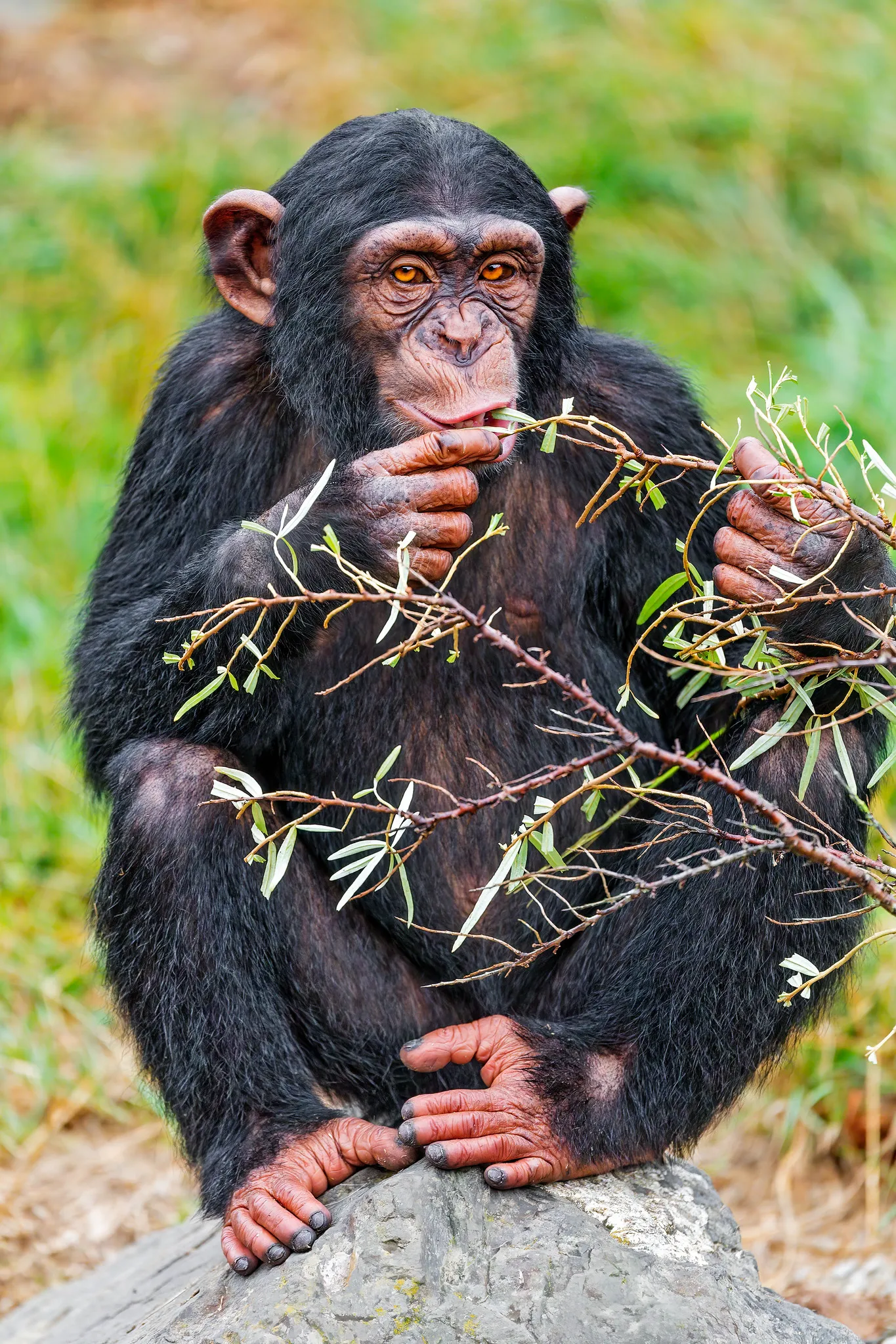
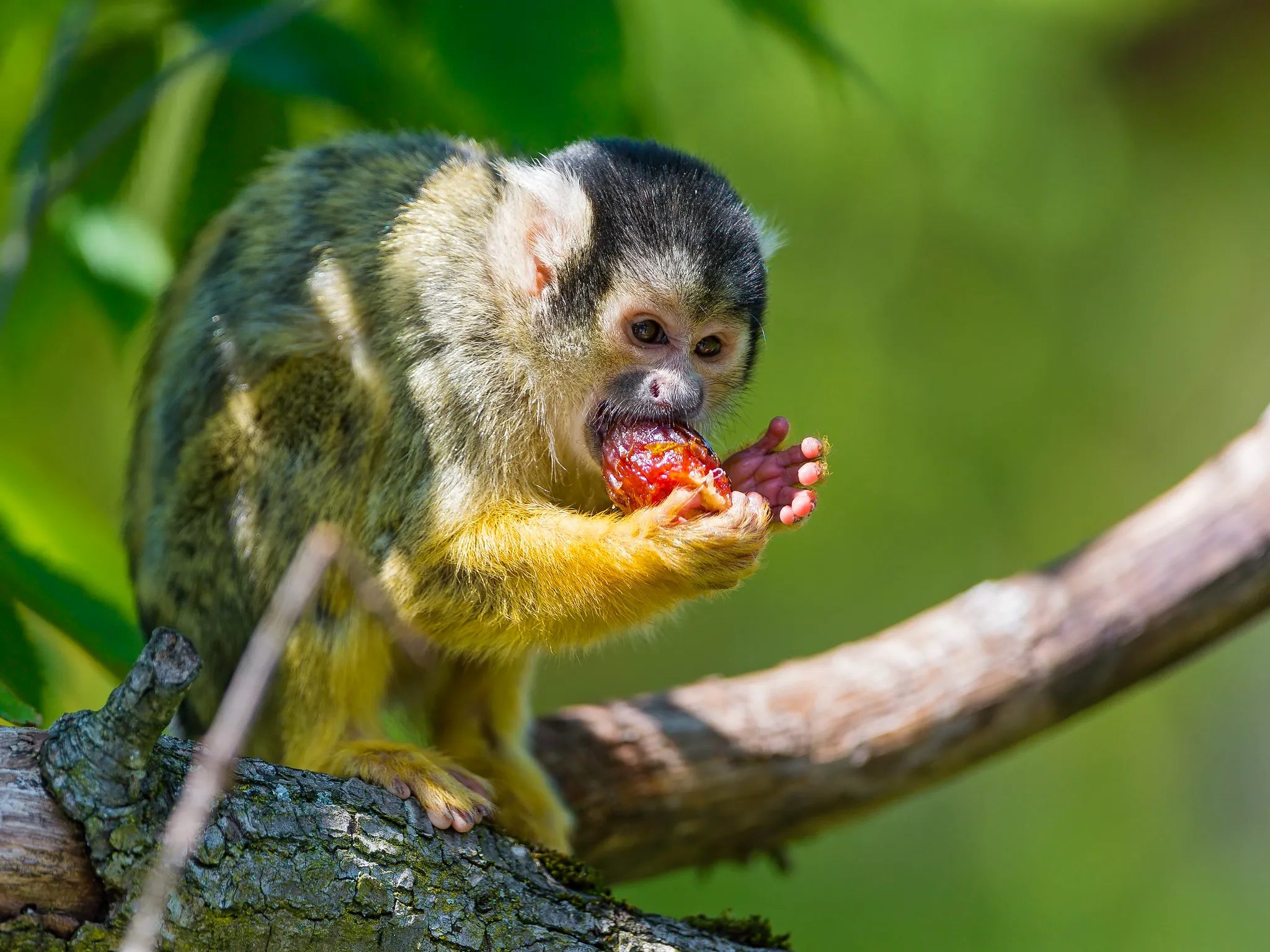
Chimpanzee:
Omnivores with a diet consisting of fruits, leaves, insects, and occasionally small mammals
Tool use for extracting insects and cracking nuts
Monkey:
Varied diets, including fruits, leaves, seeds, insects, and small vertebrates
Some species exhibit specialized feeding adaptations, such as cheek pouches for storage
Comparison:
Both chimpanzees and monkeys are opportunistic feeders with diverse diets.
Chimpanzees often exhibit more sophisticated tool use in obtaining food compared to most monkeys.
Ecological Implications:
Feeding strategies contribute to seed dispersal, vegetation control, and overall ecosystem health.
Differences in feeding behavior impact resource utilization and interactions with other species.
16. Intelligence
Chimpanzee:
Demonstrates advanced problem-solving skills, tool use, and complex social structures
Monkey:
Varies by species, with some displaying high cognitive abilities, including problem-solving and social learning
Comparison:
Chimpanzees generally exhibit higher levels of intelligence compared to most monkeys.
Monkey intelligence varies, with some species showing advanced cognitive abilities.
Ecological Implications:
Intelligence influences foraging strategies, tool use, and adaptability to changing environments.
Differences in cognitive abilities contribute to their roles in ecosystem dynamics.
17. Social Behavior
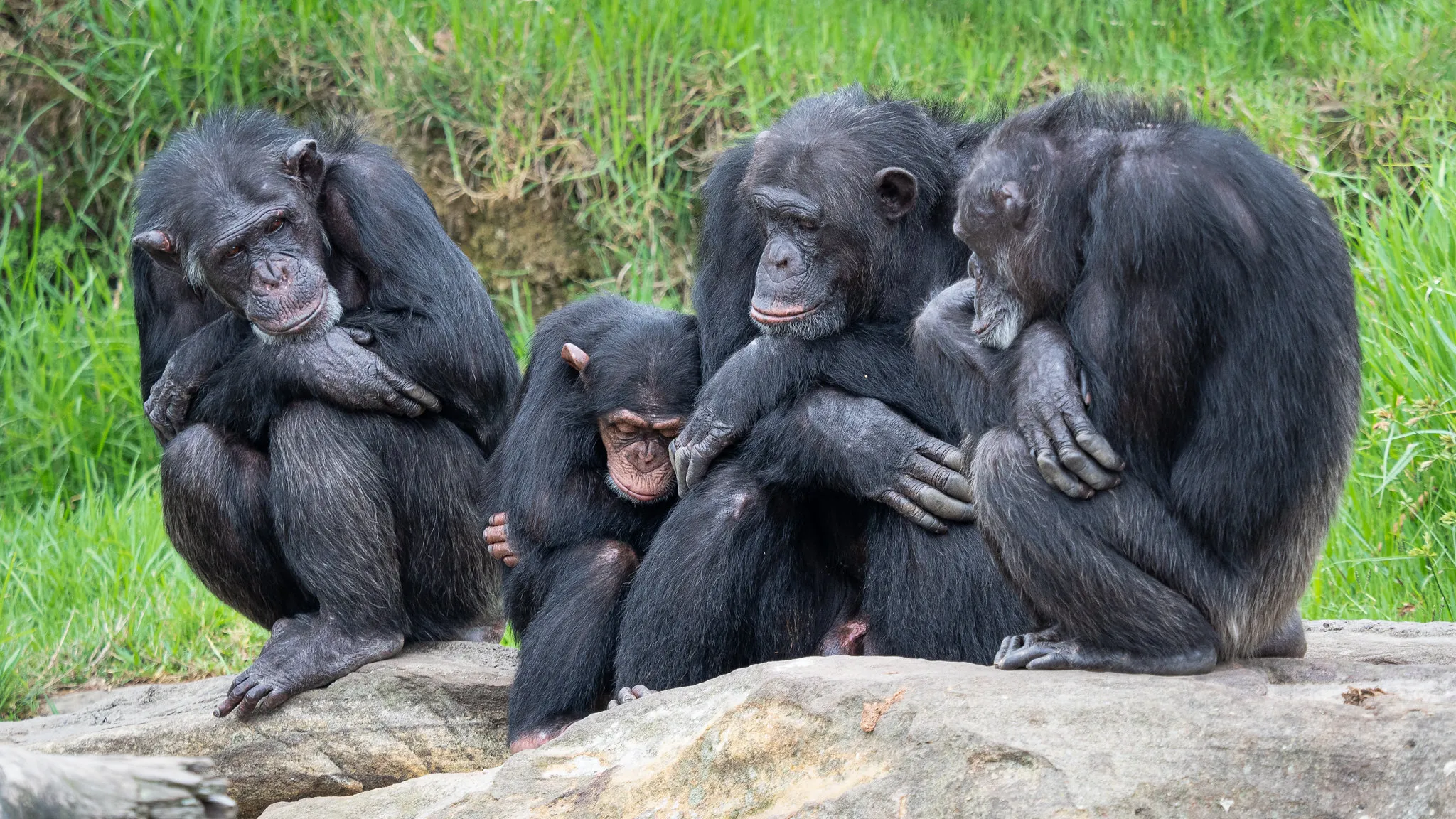
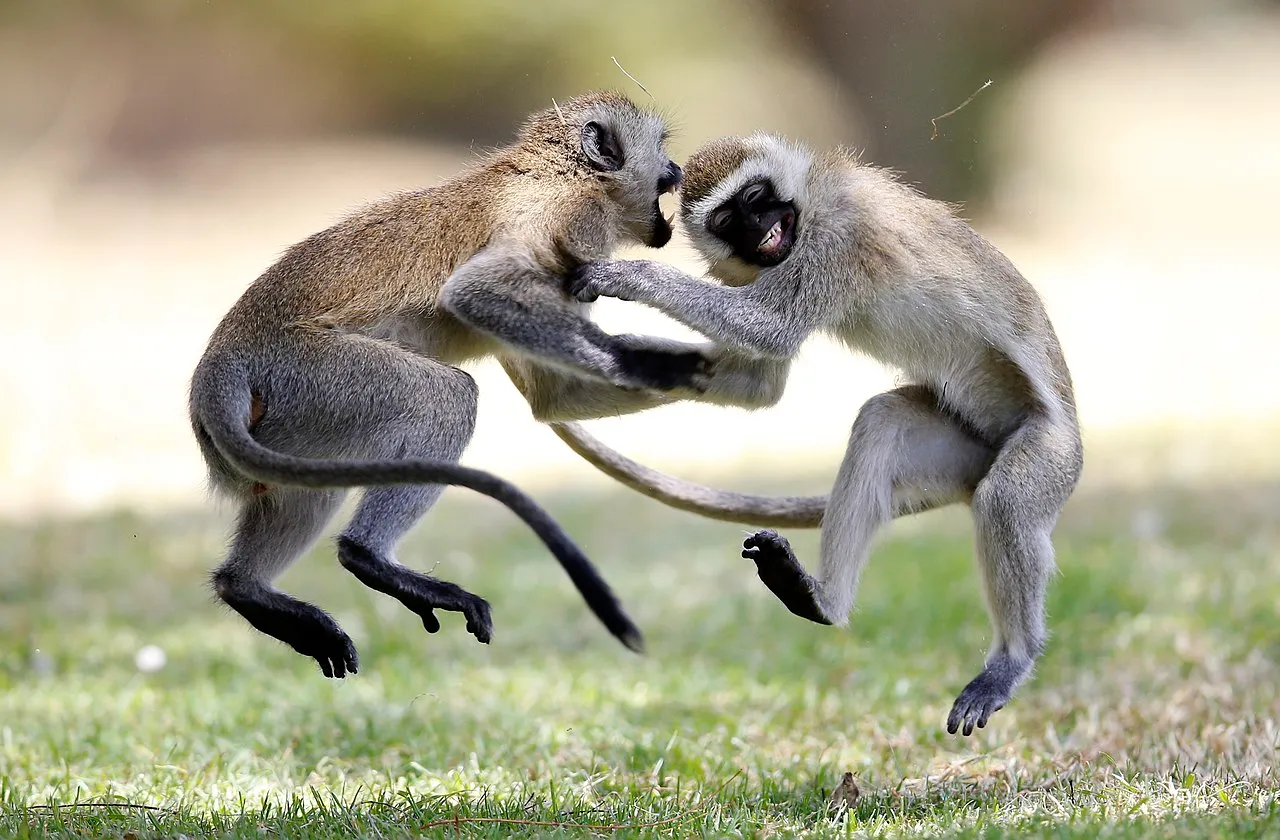
Chimpanzee:
Live in complex social groups with hierarchies
Form strong social bonds, engage in cooperative hunting, and exhibit tool-sharing
Monkey:
Variable social structures, ranging from solitary to large groups
Social behaviors include grooming, vocal communication, and cooperation in some species
Comparison:
Chimpanzees generally exhibit more complex and cohesive social structures compared to monkeys.
Monkey social behaviors vary, reflecting their adaptability to different ecological niches.
Ecological Implications:
Social structures impact resource competition, predator defense, and overall ecosystem dynamics.
Differences in social behavior contribute to the resilience and diversity of primate communities within ecosystems.
18. Mode of Reproduction
Chimpanzee:
Polygamous mating system with a dominance hierarchy
Gestation period around 230 to 240 days
Single offspring born, usually every 5 to 6 years
Monkey:
Varied mating systems, including monogamy, polygamy, and promiscuity
Gestation periods range from a few weeks to several months
Number of offspring varies, with some species giving birth to twins or more
Comparison:
Chimpanzees typically have a longer gestation period and a lower reproductive rate compared to many monkeys.
Monkey reproductive strategies vary widely, reflecting adaptations to diverse ecological conditions.
Ecological Implications:
Reproductive strategies influence population dynamics and genetic diversity within primate communities.
Differences in reproductive patterns contribute to the overall adaptability and sustainability of primate populations.
19. Parental Behavior
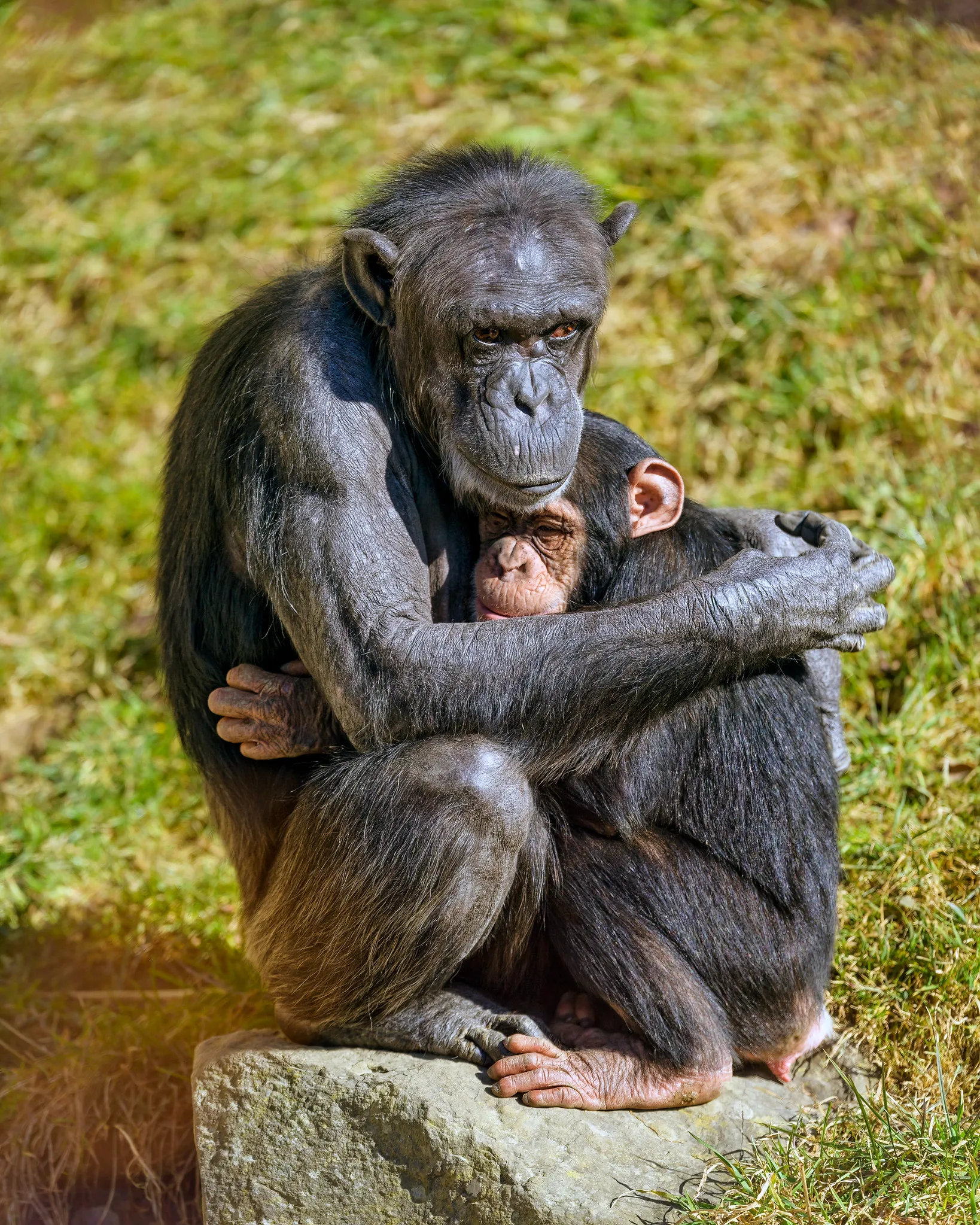
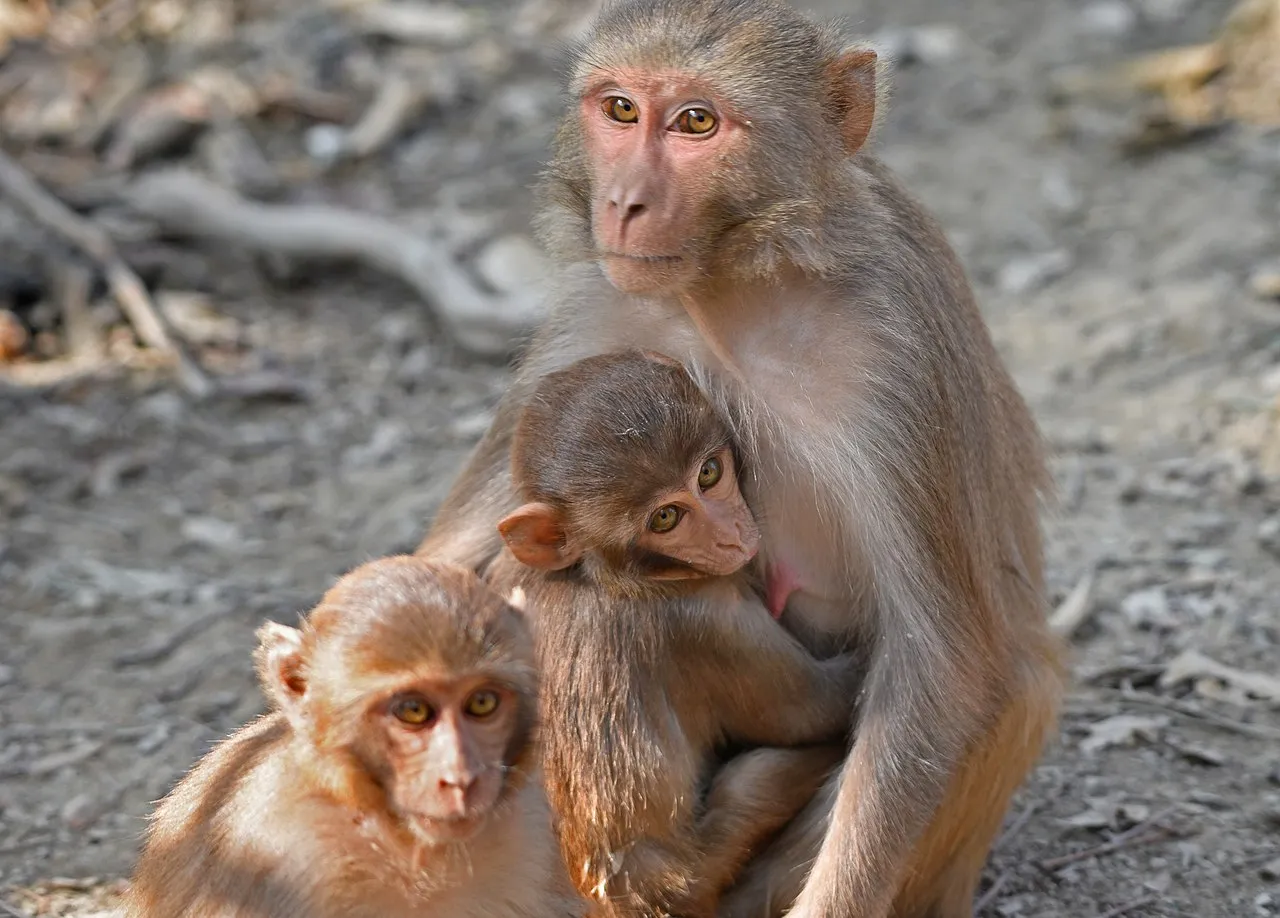
Chimpanzee:
Mothers provide extensive care and protection for offspring
Offspring dependent on mothers for several years
Monkey:
Parental care varies among species, ranging from minimal involvement to extensive care
Duration of parental care varies, influenced by ecological factors and social structures
Comparison:
Chimpanzee parental behavior is generally more involved and extended compared to many monkeys.
Monkey parental care is diverse, reflecting adaptations to different ecological niches and social structures.
Ecological Implications:
Parental care impacts offspring survival rates and influences the stability of primate populations.
Differences in parental behavior contribute to the resilience and adaptability of primate communities within ecosystems.
20. Proximity to Human-Inhabited Areas
Chimpanzee:
Face threats from habitat loss, hunting, and diseases transmitted by humans
Conflicts with humans in areas where their habitats overlap
Monkey:
Varied relationships with humans, ranging from coexistence to conflict
Some species adapt well to human-altered landscapes, while others face threats from hunting and habitat destruction
Comparison:
Both chimpanzees and monkeys experience challenges related to human activities.
The level of proximity and interaction with humans varies among species and is influenced by ecological flexibility.
Ecological Implications:
Proximity to human-inhabited areas poses threats to primate populations, affecting their distribution and behavior.
Understanding these interactions is crucial for implementing effective conservation measures and managing human-wildlife conflicts.
21. Behavior Toward Humans
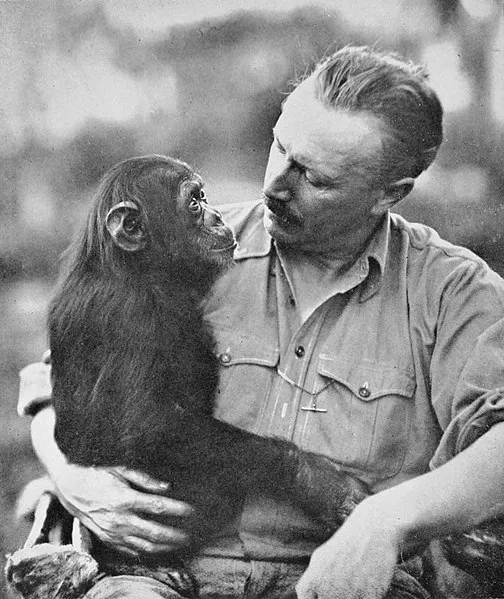
Chimpanzee:
Can exhibit aggressive behaviors, especially in response to perceived threats
May form bonds with researchers or caregivers in captivity
Monkey:
Behaviors range from avoidance to curiosity or aggression, depending on the species
Some species adapt to human presence and may be found in urban areas
Comparison:
Both chimpanzees and monkeys can display varied behaviors in response to human presence.
Responses are influenced by factors such as species-specific characteristics, past interactions, and individual temperament.
Ecological Implications:
Understanding primate behavior toward humans is crucial for conservation efforts and mitigating potential conflicts.
Interactions with humans can impact primate populations and their ecological roles, emphasizing the need for responsible conservation practices.
22. Danger Posed to Humans
Chimpanzee:
Potentially dangerous due to their strength and aggressive behavior
Infamous for attacks on humans, particularly in captivity or when habitats are disturbed
Monkey:
Generally pose less direct threat compared to chimpanzees
Some species may become aggressive if provoked or feel threatened
Comparison:
Chimpanzees are generally considered more dangerous to humans due to their strength and territorial nature.
Monkeys may pose risks in certain situations, but their threat level is typically lower than that of chimpanzees.
Ecological Implications:
Human safety concerns impact conservation strategies, especially in areas where primates and humans coexist.
Understanding the potential dangers posed by primates helps in implementing measures to ensure safety for both humans and wildlife.
23. Associated Precautions
Chimpanzee:
Maintaining safe distances in the wild to avoid provoking aggression
Implementing secure enclosures in captivity to prevent escapes and human-chimpanzee conflicts
Monkey:
Avoiding direct contact to reduce stress for both humans and monkeys
Using measures like secure waste disposal to minimize human-monkey conflicts in urban areas
Comparison:
Precautions vary for chimpanzees and monkeys, reflecting the specific risks associated with each species.
Responsible practices include minimizing opportunities for conflicts, ensuring habitat preservation, and implementing safety measures in captivity.
Ecological Implications:
Effective precautions contribute to coexistence between humans and primates, promoting conservation efforts and minimizing negative ecological impacts.
Addressing potential conflicts is crucial for the well-being of both humans and primate populations.
24. Conservation Status
Chimpanzee:
Endangered (IUCN Red List)
Threatened by habitat loss, poaching, and diseases
Monkey:
Varied conservation statuses, ranging from least concern to critically endangered, depending on species
Threats include habitat destruction, hunting, and the pet trade
Comparison:
Chimpanzees, as a species, face a higher risk of extinction compared to some monkey species.
Conservation efforts must address specific threats to each species, considering their ecological roles and population dynamics.
Ecological Implications:
Conservation status reflects the health of primate populations and the overall state of their habitats.
Effective conservation measures contribute to biodiversity preservation and the maintenance of ecosystem balance.
*Summary of Comparison
Taxonomy:
Chimpanzee: Genus Pan, Species troglodytes
Monkey: Varies by species (e.g., Cercopithecidae for Old World monkeys, Cebidae for New World monkeys)
Appearance:
Chimpanzee: Coarse black hair, expressive eyes, longer arms
Monkey: Diverse appearances, varied fur patterns, tails in many species
Size:
Chimpanzee: Generally larger, males 3.3-5.6 feet, females 2-4.6 feet
Monkey: Wide size range, from small to large species
Weight:
Chimpanzee: Males 90-130 pounds, females 60-110 pounds
Monkey: Varied, from a few ounces to over 100 pounds in larger species
Bite Force (PSI):
Chimpanzee: Estimated 1,000-1,300 PSI
Monkey: Varies, generally lower than chimpanzees
Physical Offensive Advantages:
Chimpanzee: Strong, tool use, well-developed canines
Monkey: Varied physical traits, some agility and speed
Physical Defensive Advantages:
Chimpanzee: Climbing, strength, cooperative behaviors
Monkey: Speed, agility, climbing abilities
Speed:
Chimpanzee: Around 25 km/h (15.5 mph)
Monkey: Variable, generally 20-40 km/h (12-25 mph)
Agility:
Chimpanzee: Exceptional climbing and swinging abilities
Monkey: Highly agile, species-specific adaptations
Senses:
Chimpanzee: Well-developed vision, acute hearing, sense of touch
Monkey: Varied senses, including vision, hearing, and touch
Overall Physical Capacity:
Chimpanzee: Robust, versatile, both quadrupedal and bipedal locomotion
Monkey: Varied physical capacities, adapted to ecological niches
Habitat Preference(s) and Geographic Region:
Chimpanzee: Tropical rainforests, savannas, Central and West Africa
Monkey: Diverse habitats globally, including rainforests, deciduous forests, and savannas
Tracks:
Chimpanzee: Variable, handprints and footprints resembling humans
Monkey: Diverse tracks, tail marks in species with prehensile tails
Lifespan:
Chimpanzee: 40-60 years in the wild
Monkey: Varied, 10-40 years depending on species
Mode of Feeding:
Chimpanzee: Omnivores, tool use for extracting insects and cracking nuts
Monkey: Varied diets, some with cheek pouches, opportunistic feeders
Intelligence:
Chimpanzee: Advanced problem-solving, tool use, complex social structures
Monkey: Varies by species, some with high cognitive abilities
Social Behavior:
Chimpanzee: Complex social groups, cooperation, hierarchies
Monkey: Variable social structures, grooming, vocal communication
Mode of Reproduction:
Chimpanzee: Polygamous, longer gestation, single offspring every 5-6 years
Monkey: Varied mating systems, gestation periods, and number of offspring
Parental Behavior:
Chimpanzee: Extensive care, offspring dependent for several years
Monkey: Diverse parental care, variable duration, and involvement
Proximity to Human-Inhabited Areas:
Chimpanzee: Face threats from habitat loss, hunting, and diseases
Monkey: Varied relationships, some adapt well to human-altered landscapes
Behavior Toward Humans:
Chimpanzee: Can be aggressive, conflicts in captivity or disturbed habitats
Monkey: Variable behaviors, avoidance to aggression, adaptability to human presence
Danger Posed to Humans:
Chimpanzee: Potentially dangerous due to strength and aggression
Monkey: Generally less threatening, may become aggressive if provoked
Associated Precautions:
Chimpanzee: Maintain safe distances, secure enclosures in captivity
Monkey: Avoid direct contact, use measures for waste disposal in urban areas
Conservation Status:
Chimpanzee: Endangered
Monkey: Varied, from least concern to critically endangered depending on species
Conclusion
I. Similarities
Both chimpanzees and monkeys belong to the order Primates, sharing common evolutionary ancestry.
Face threats from habitat loss, human activities, and diseases.
II. Differences
– Chimpanzees generally exhibit higher intelligence and complex social structures compared to monkeys.
– Conservation status varies, with chimpanzees facing a higher risk of extinction. – Interactions with humans differ, with chimpanzees posing a higher potential danger.
